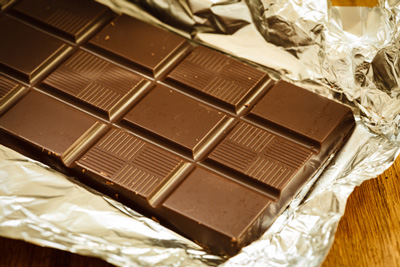Nestlé study could help save tonnes of packaging
- Like
- Digg
- Del
- Tumblr
- VKontakte
- Buffer
- Love This
- Odnoklassniki
- Meneame
- Blogger
- Amazon
- Yahoo Mail
- Gmail
- AOL
- Newsvine
- HackerNews
- Evernote
- MySpace
- Mail.ru
- Viadeo
- Line
- Comments
- Yummly
- SMS
- Viber
- Telegram
- Subscribe
- Skype
- Facebook Messenger
- Kakao
- LiveJournal
- Yammer
- Edgar
- Fintel
- Mix
- Instapaper
- Copy Link
Posted: 4 November 2015 | Victoria White | 2 comments
Nestlé scientists are testing chocolate wrapped in different packaging materials to investigate the extent to which degradation factors affect the products through the course of their designated shelf lives…


Nestlé scientists are investigating the extent to which degradation factors affect chocolate products through the course of their designated shelf lives.


The scientists are trying to identify the critical point at which the amount of oxygen a product consumes begins to have an impact on its taste and quality. To do this, they have wrapped 700 individual chocolate bars in different packaging materials with varying properties and placed them in a sealed room.
“We’ve divided the bars into groups and packed them under different storage conditions,” says Robert Witik, the scientist leading the study at the Nestlé Research Center in Lausanne. “Some are wrapped in packaging with a high oxygen barrier, while others are wrapped in packaging with a low oxygen barrier.
“We’ve also adjusted the level of oxygen inside the packaging, so some bars have more oxygen between chocolate and wrapper than others.”
Research findings could define the type of material Nestlé uses to pack its products
Over the next few months the scientists will be measuring the amount of oxygen the bars consume, using delicate sensors attached to chocolate from the different test groups. Every 30 days, they send a handful of bars from each group to be tested by sensory experts to see if there has been any loss of quality and taste. In the long-run, their findings should enable Nestlé to calculate how much oxygen chocolate will consume when packed in a given material under specific conditions.
But the research is not only about chocolate. Robert and the team are already studying other products to establish a methodology that could be applied to Nestlé’s entire portfolio.Their aim is to feed all the information they collect into a ‘shelf-life prediction tool’ they’re developing to help packaging engineers across the company to make more informed decisions about the packaging they select.
“Packaging materials can be very complex, with many layers performing different functions,” says Robert. “So choosing the right material is a very technical process.
Ultimately, the project could help save tonnes of packaging every year.







Hi Vectoria
interesting … many thanks
Hi Victoria: Interesting article and study. Packaging, I guess, requires several considerations: its ability to keep a product fresh (as seen in this study), the cost to produce it, and its environmental impact (life in the landfill and recyclability). It will be interesting to see if Nestlé comes up with something new.
Also, a “sensory expert”? Sounds like a great job!